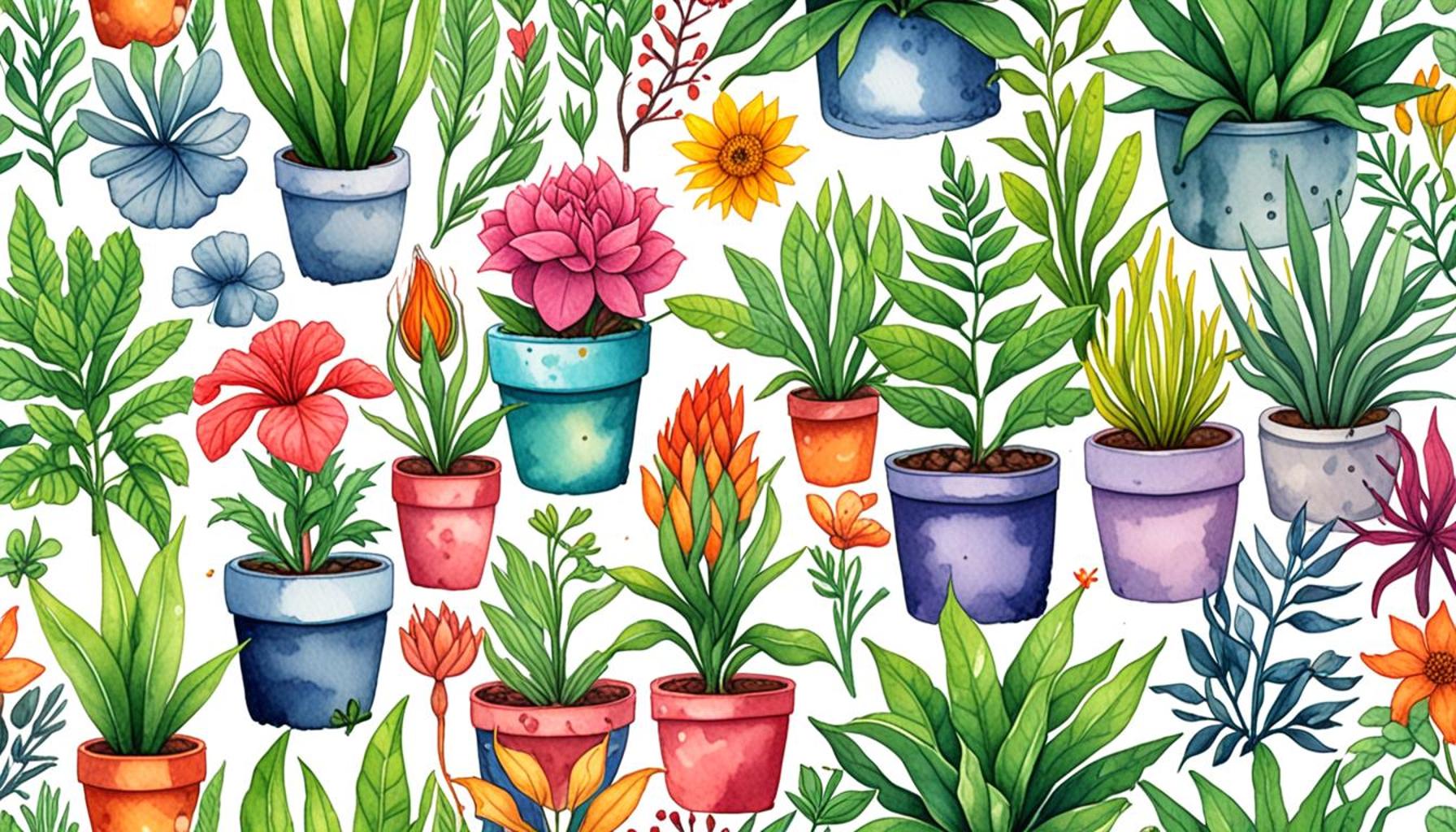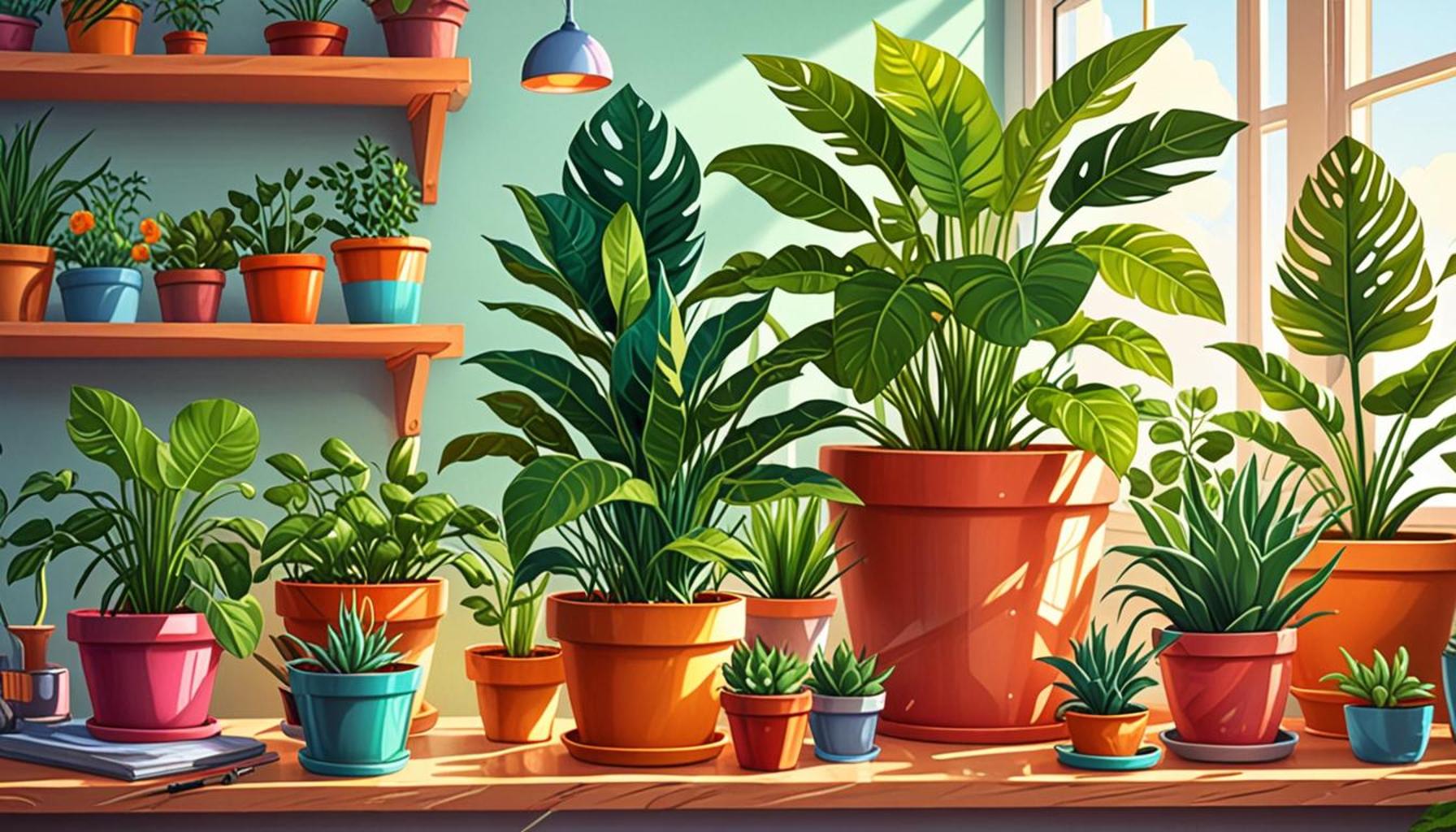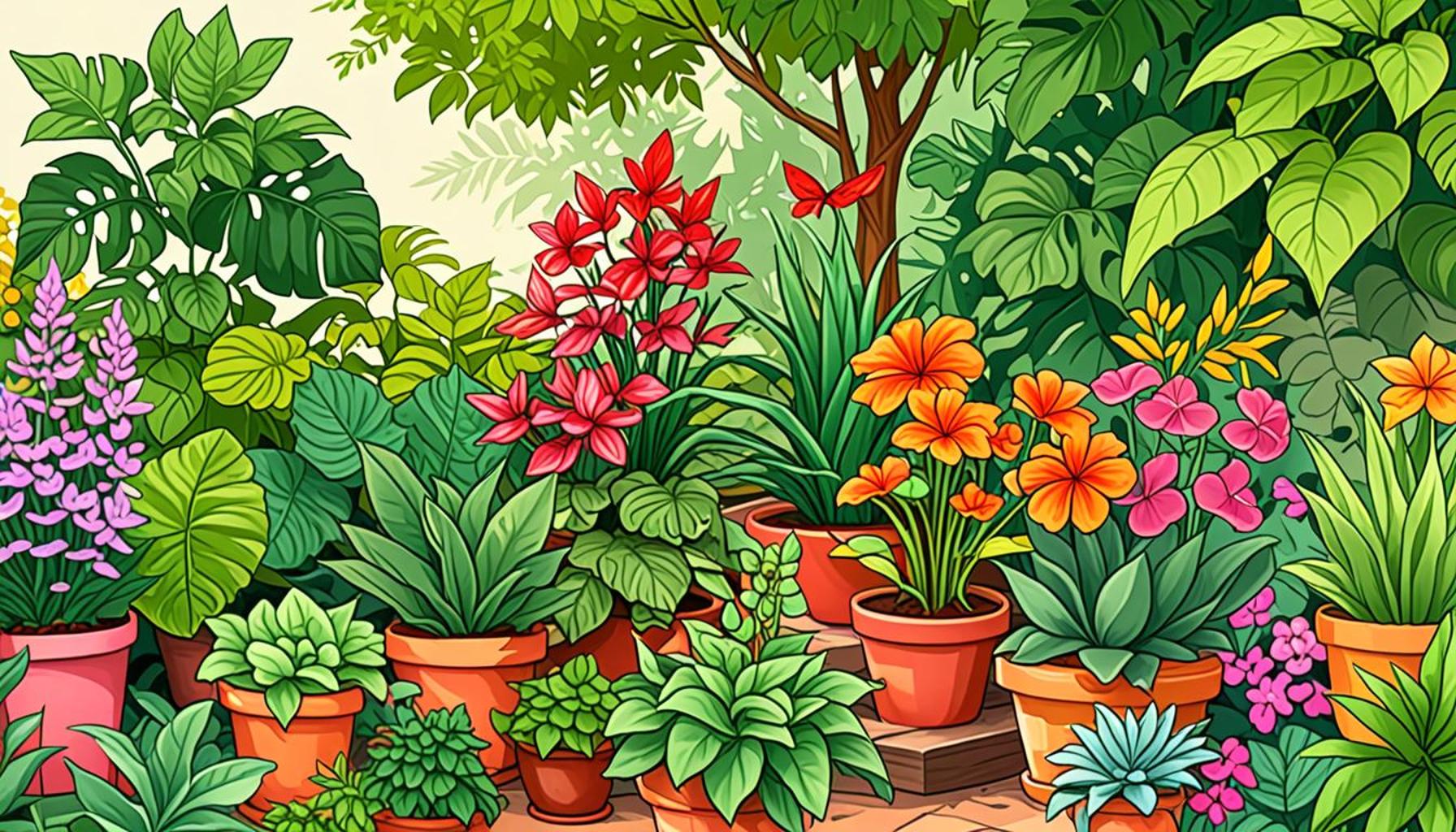How to Choose Plants for Beginners: The Ultimate Guide to a Successful Garden
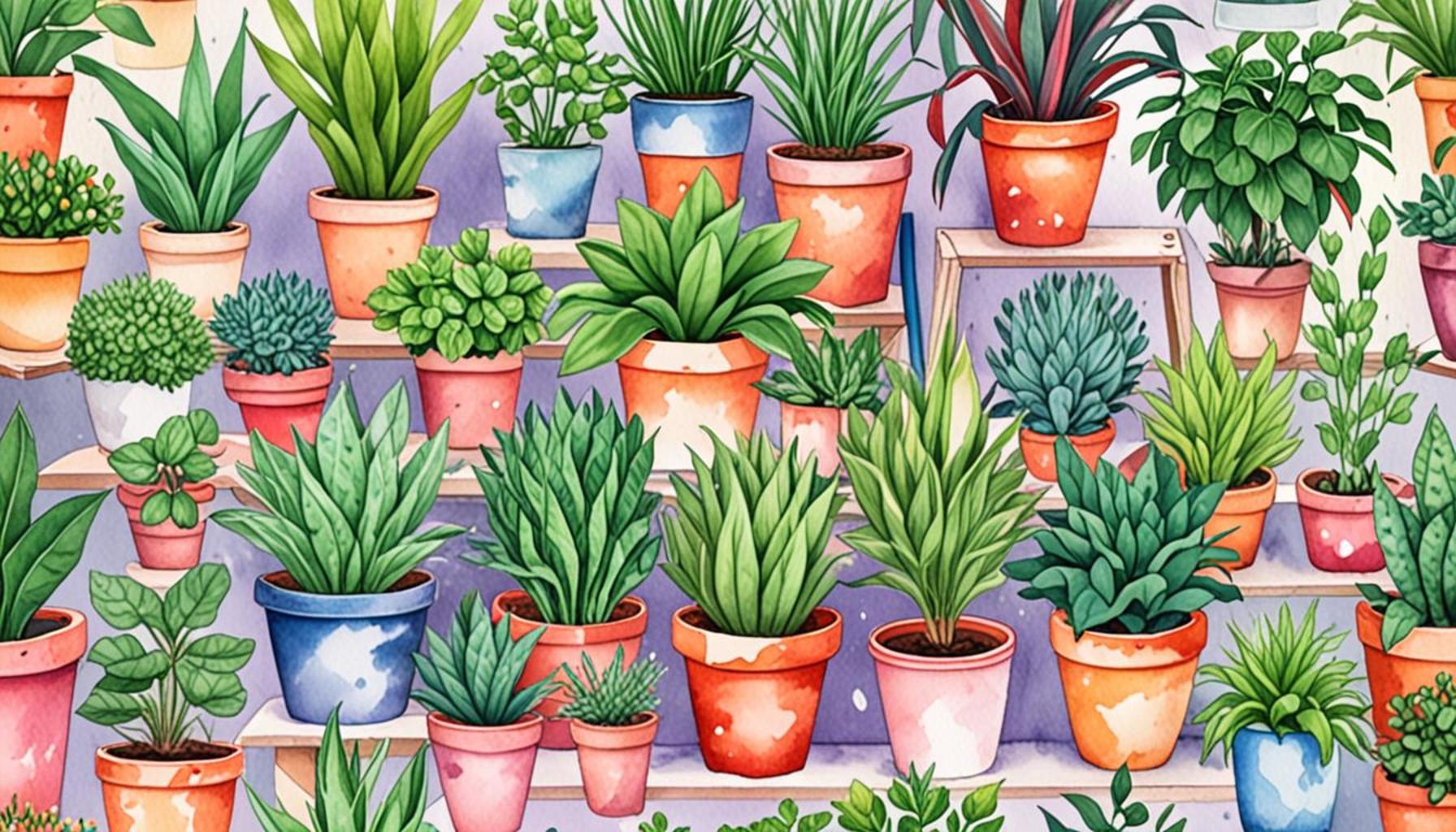
Understanding Garden Dynamics
Embarking on a gardening journey not only reconnects you with nature but also provides significant mental and physical rewards. The initial phase of choosing what to plant can be daunting due to the overwhelming variety of options. It’s crucial to consider several factors before making your selections, as these decisions will ultimately shape the health and glory of your garden.
Key Factors for Plant Selection
When selecting plants for your garden, start by considering the climate. Research your USDA hardiness zone, which is a climate-based classification system that guides gardeners on which plants are most likely to thrive in their region. For example, a gardener in Zone 5, characterized by cold winters, will need to choose different plants than someone in the warmer Zone 9, which enjoys milder winters.
Once you’ve established your climate zone, the next consideration is sunlight. Take careful note of the sunlight exposure in your garden. Does it get full sun for six or more hours a day, or is it partially shaded? Plants like tomatoes thrive in full sun, while others, like ferns, prefer shady conditions. Understanding this aspect is essential to providing an optimal environment for your chosen plants.
Soil type is another vital element to examine. Conduct a soil test to determine its pH, drainage capabilities, and nutrient levels. For instance, sandy soils drain quickly and may require more frequent watering, while clay soils retain moisture but can become compacted. Each type offers different benefits and challenges. Amending your soil based on your testing results can greatly influence the success of your plants.
Beginner-Friendly Plant Choices
With the foundational knowledge of climate, sunlight, and soil, it’s time to consider specific plants that fare well for beginners. Marigolds, for example, are not only visually stunning with their vibrant orange and yellow blooms, but they also serve a practical purpose by deterring pests that can harm other plants. Their resilience and ease of care make them an excellent choice for novice gardeners.
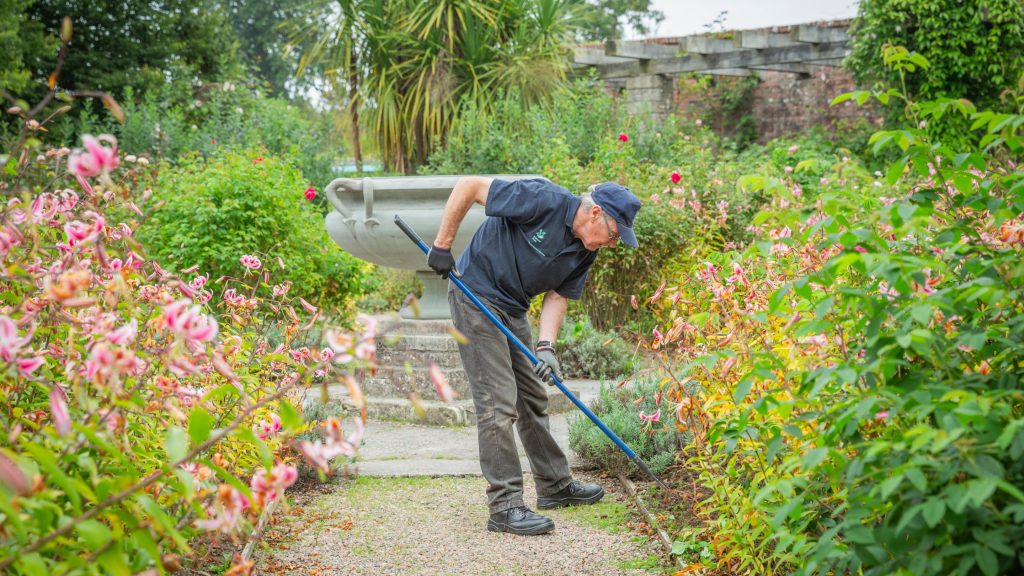
Succulents have gained immense popularity due to their unique aesthetics and minimal care requirements. These hardy plants are perfect for sunny spots and require little water, making them ideal for individuals with busy lifestyles or those who frequently travel.
Finally, herbs like basil, cilantro, and parsley can add flavor to your meals. They are generally easy to cultivate in small spaces, even in pots on a windowsill. Additionally, growing your own herbs provides a fresh ingredient for your cooking while adding greenery to your home.
In this guide, you will acquire valuable insights, empowering you to make informed plant selections. From evaluating your local environment to exploring a diverse range of plants, you are well on your way to creating a lush, vibrant garden. Whether your goal is to develop a stunning flower bed or to cultivate your very own vegetable patch, understanding these essential factors will pave the way to gardening success.
DISCOVER MORE: Click here for essential tools to ensure a smooth harvest
Essential Considerations for Plant Selection
Choosing the right plants for your garden is a combination of science and art. With various factors influencing plant growth, understanding these elements will empower you to make informed selections that not only beautify your space but also flourish in harmony with your surroundings. As a beginner gardener, here are essential considerations to keep in mind:
Assess Your Space
Before diving into plant selection, take a close look at your gardening space. This includes factors such as the size of your garden, existing vegetation, and any structures that may affect plant growth. Making a detailed observation can lead to key insights for plant growth, and helps you avoid common pitfalls.
- Size: Determine how much room you have for growth. Will you be creating a sprawling flower bed, a compact vegetable garden, or a potted herb collection on your balcony?
- Microclimates: Identify pockets within your garden that may have different growing conditions. For instance, areas shielded by fences or under trees may experience less sunlight and require shade-tolerant plants.
- Accessibility: Consider how often you’ll need to maintain your plants. Placing frequently accessed plants within arm’s reach can facilitate easier gardening.
Understanding Growth Habits
Different plants have unique growth habits that influence their suitability for your garden. Familiarizing yourself with these can help you avoid overcrowding and ensure each plant gets the attention it requires.
Plants can generally be categorized into:
- Annuals: These plants complete their life cycle in one growing season, making them perfect for seasonal displays. Examples include petunias and zinnias.
- Perennials: They live for several years and return each season, providing consistency in your garden. Popular choices include lavender and echinacea.
- Biennials: These plants take two years to complete their life cycle, blooming in their second year. Examples include foxglove and hollyhock.
Choosing Appropriate Plant Combinations
Pairing plants harmoniously is another critical aspect of successful gardening. Consider how different species can complement each other in terms of aesthetics, growth requirements, and pest management. For instance, companion planting techniques, like pairing tomatoes with basil, can enhance growth and deter pests.
Moreover, using a variety of textures, colors, and heights can create a visually striking display while promoting a biodiverse environment. Research associating plants can lead to fruitful and vibrant gardens, making the effort worthwhile.
By assessing your garden’s layout, understanding different growth habits, and carefully pairing your plants, you set the foundation for a thriving garden that brings joy and beauty into your life. This guide will continue to delve deeper into specific plant recommendations and further insights to ensure your gardening journey is a successful one.
When embarking on the journey of creating your own garden, understanding the basic principles of plant selection is essential. This guide will arm you with the knowledge you need to choose the right plants, ensuring a flourishing space that brings you joy and satisfaction.First and foremost, consider your climate. Each plant has specific temperature and humidity requirements that should align with your local conditions. Researching hardiness zones will provide insight into what thrives in your area. Imagine the delight of watching your garden flourish, knowing that each plant is well-suited to your environment.Next, assess the light conditions in your garden space. Some plants thrive in full sun, while others prefer partial shade or even full shade. Conducting a simple light test can help determine sun exposure throughout the day, guiding your choices. For instance, sun-loving varieties like lavender and coneflowers will flourish in a sunny patch, while ferns and hostas will thrive in shadier areas. Soil quality is another critical factor in plant selection. Testing your soil can reveal nutrient levels and pH balance. If your soil is rocky or clay-heavy, consider plants that flourish in such environments or invest in soil amendments to create the ideal conditions. Many vegetables and flower varieties adapt remarkably, but knowing your soil’s needs can take your garden to the next level. Watering requirements are also paramount. Some plants need consistent moisture, while others are drought-resistant. Understanding these needs can save time and resources, ensuring your garden remains healthy without over- or under-watering. Incorporating a variety of plants with differing water needs can also create a more resilient garden ecosystem.In addition to these elements, don’t forget to think about the maintenance level. Beginners might prefer low-maintenance plants that require less care, such as succulents or native species. These are often well-adapted to local conditions and can help you build confidence before delving into more demanding varieties.Additionally, planning your garden layout based on the size and growth habits of your chosen plants leads to a harmonious design. Tall plants should be positioned at the back, with shorter ones at the front to ensure adequate sunlight for all. Also, consider the colors and textures of the plants, which can enhance the overall visual appeal of your garden.Using the right techniques to research plants and their specific requirements is vital to your success. Resources like local gardening clubs, extension services, and online forums can provide invaluable insights. Engaging with seasoned gardeners can unveil tips and tricks that can help avoid mistakes.To further assist your learning, consider attending workshops or community gardening events. These platforms offer opportunities to gain hands-on experience and exchange knowledge with fellow gardening enthusiasts. Creating a network can be instrumental in your gardening journey, fostering a supportive environment where questions can be asked, and experiences shared.By dedicating time to understand your climate, light conditions, soil, water, maintenance, and layout, you’ll build a thriving garden that reflects your personal style and grows with you as you gain experience. Embrace the excitement of gardening, and let it bloom into a cherished hobby.
DISCOVER MORE: Click here to learn about essential gardening tools
Plant Hardiness and Climate Considerations
Understanding your local climate and plant hardiness zones is essential for selecting species that will thrive in your garden. In the United States, the USDA Plant Hardiness Zone Map provides crucial information about the minimum temperatures a plant can withstand, helping beginners make informed choices based on their geographical location. Here’s how to evaluate these elements:
Know Your Hardiness Zone
Your hardiness zone is determined by the average lowest winter temperatures in your area. It ranges from zone 1 (the coldest) to zone 13 (the warmest), with each zone representing a different temperature range. For example, California’s coastal regions might be in zones 9-10, while parts of Alaska could be as cold as zone 1. Understanding your zone can prevent costly mistakes in selecting plants that won’t survive the winter.
- Research Local Varieties: Many local nurseries provide plants suited to your zone, which often succeed better than exotic options. Native plants are tailored to thrive in your specific climate.
- Consider Seasonal Changes: Some plants require specific conditions throughout the seasons. For example, if your region experiences heavy rainfall in spring or dry conditions in summer, select plants that can handle these fluctuations.
Sunlight and Water Requirements
Another critical factor for beginners to consider is the sunlight and water needs of potential plants. Different species have varying requirements, and aligning these with the conditions available in your garden will foster a healthier plant ecosystem.
- Identify Sunlight Exposure: Observe your garden during peak sunlight hours to determine which areas are sunny, partially shaded, or fully shaded. Full sun plants need at least 6-8 hours of direct sunlight daily, while shade plants can thrive in lower light conditions.
- Water Needs: Understand the watering requirements; some plants prefer consistently moist soil, while others need dry conditions. For instance, succulents require less water and prefer dryer, well-draining soil, while ferns enjoy more moisture.
Soil Quality and Fertility
The quality of your garden soil plays a significant role in your plants’ health. Begin by testing your soil for pH level and nutrient content, which will inform you about any amendments or fertilizers needed to optimize growth. For example, most garden plants prefer a pH between 6.0 and 7.5. Here are some important steps to consider:
- Soil Testing: Use a soil test kit to measure pH and essential nutrients such as nitrogen, phosphorus, and potassium. Many extensions and garden centers offer testing services.
- Amending Soil: Depending on the results, you can amend your soil with compost, peat moss, or other organic materials to improve fertility and drainage. This ensures your plants have the nutrients they need to thrive.
Maintenance Needs and Growth Rate
Lastly, assess how much time and effort you are willing to invest in your garden. Some plants require regular pruning, deadheading, and intensive care, while others are more low-maintenance. For beginners, it’s often ideal to start with plants that are resilient and have a slower growth rate, allowing you ample time to learn the ropes of gardening without feeling overwhelmed. Consider these aspects:
- Maintenance Level: Examine if you can commit to regular care. For example, herbs like thyme or basil are relatively straightforward and can tolerate some neglect.
- Growth Rate: Fast-growing plants will settle in quickly, providing immediate rewards. Plants like sunflowers or cosmos can fill your garden quickly, perfect for instant gratification.
By integrating knowledge about plant hardiness, climate considerations, growth habits, and maintenance needs, you’ll be better equipped to curate a thriving garden. Mastering these elements as a beginner gardener sets the stage for a rewarding and productive journey in gardening.
DISCOVER MORE: Click here for essential gardening tools
Conclusion
Embarking on your gardening journey can be both exciting and daunting, but with the right approach, even beginners can cultivate a flourishing garden. The key is to understand essential factors such as plant hardiness, climate specifics, sunlight exposure, and soil quality. By identifying your local hardiness zone, you make informed choices, selecting plants that are naturally suited to your environment. The integrity of your soil cannot be overlooked; it serves as the foundation for your plants’ health, so a simple soil test can save time and effort in the long run.
When it comes to maintenance and growth, balancing your time and preferences is crucial. Opting for low-maintenance or slow-growing plants initially can simplify the learning process, allowing you to progressively build confidence in your gardening skills. Over time, as you become more acquainted with the nuances of nurturing plants, you can branch out into more complex varieties.
Ultimately, the art of gardening is about exploration and patience. There’s a wealth of resources available—from local gardening clubs to online forums—where you can share experiences and gain insights. Each seed you sow is an opportunity for growth, not only for your garden but for your knowledge and appreciation of nature. So, don your gardening gloves, and embark on this rewarding journey. Remember, a successful garden is rooted in understanding, care, and a genuine passion for plants.
